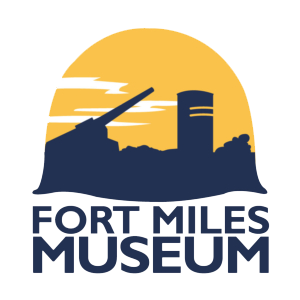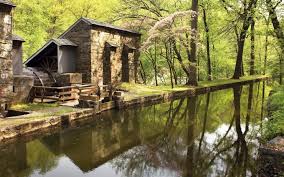Sunday, June 3 – Self Interpretive Pre-Meeting Trip
“Characteristics of Delaware Beach Sand”
Cost: Free
Equipment needed:
- Flip flops
- Beach chair
- Blanket
- Sunglasses
- Sunscreen
- Cooler
Logistics: at your leisure
Tuesday, June 5 – Mid-Week Field Trip
“The Delaware Coast: Geology, History, and the Challenges of a Dynamic Environment”
Logistics: Busses board in front of hotel at 11:45 am; return to hotel at 8 pm
Cost: Free
Although the Atlantic Coast of Delaware is only about 40 kilometers in length, its rich geologic and cultural history have made an outsize contribution to the character of the First State. Geologic forces have continually shaped this coastal landscape over millennia, bringing changes that create societal challenges for the communities of today and of the past. As part of the AASG meeting, Delaware Geological Survey staff will lead a trip entitled “The Delaware Coast: Geology, History, and the Challenges of a Dynamic Environment” to explore Delaware’s beautiful Atlantic Coast.
We will be visiting two stops on this trip. First, we will drive south of Rehoboth Beach to Indian River Inlet, where a deep tidal channel cuts through the narrow, dune-swept barrier-lagoon coastline. The obstruction of longshore sand transport by the inlet jetties has resulted in a significant offset of the beach trend. The beach processes and coastal erosion visible at this location provide an appropriate setting for discussion of beach nourishment, coastal change, sea-level rise, and coastal engineering.

From Indian River Inlet, we will drive to the northern terminus of Delaware’s Atlantic coastline at Cape Henlopen State Park, considered by many to have one of the most beautiful beaches in the mid-Atlantic region. Miles of dunes grace this elongate cape that is positioned between the strong surf of the Atlantic Coast on its east side and the gentler waves of the Delaware Bay on its west side. Sea level rise and longshore transport continually reshape the cape, forcing a westward retreat and northward elongation through time.
 |
 |
At this stop, we will examine the nature of evolution of Cape Henlopen from the vantage point of a restored World War II observation tower that provides an elevated 360 degree view of the coastal region. The observation tower is located at the site of the former Fort Miles, part of a coastal defense system built to guard the mouth of the Delaware Bay from German warships and submarines. We will also visit nearby Fort Miles exhibits, including restored barracks and bunkers, gun emplacements, and a collection of vintage artillery pieces. The long-distance coastal views will provide a launching point for discussion of the dynamics of coastal change and the impact of these changes on society, including development pressures near a dynamic coastline. And, the surrounding exhibits from the era of Fort Miles will give us snapshots of interesting part of the cultural history of the cape.
 |
 |
 |
Following the field trip, attendees will be treated to a beachside barbeque dinner in Cape Henlopen State Park, featuring Delaware-style crab cakes, barbeque chicken, and brisket.
Thursday, June 7 – Post Meeting Field Trip
“Blue Rocks, Black Powder, and Geology by Train”
Logistics: Safety briefing and load buses. Bus departs hotel at 6:45 am; returns to hotel at 7:30 pm
Cost: $135.00 (Includes Happy Hour on the train and a copy of Special Publication 20, Delaware Piedmont Geology)

If you miss this trip, you will always regret it!! Come explore the beginnings of the Du Pont Company and tour the Hagley Museum on the Brandywine Creek, which was a crucible for the U.S. industrial revolution in the early 19th century. Located on 235 acres along the banks of the Brandywine in Wilmington, Delaware, Hagley is the site of the gunpowder works founded by E. I. du Pont in 1802. This example of early American industry relied on water power supplied by the adjacent creek for most of the manufacturing process, and includes restored mills, a machine shop, a workers’ community, and the ancestral home and gardens of the du Pont family.
After a welcome and orientation talk by Hagley docent Dr. Thomas Stack, Sandy Schenck will  describe the geology and relevant history of the Brandywine Blue Gneiss (Wilmington Blue Rocks), which was quarried at the site. Delaware is home to the only baseball team named after the local rocks–our minor league “Wilmington Blue Rocks”. Trip attendees will divide up into smaller groups and each group will have a docent lead a tour of Hagley museum, along with demonstrations of the
describe the geology and relevant history of the Brandywine Blue Gneiss (Wilmington Blue Rocks), which was quarried at the site. Delaware is home to the only baseball team named after the local rocks–our minor league “Wilmington Blue Rocks”. Trip attendees will divide up into smaller groups and each group will have a docent lead a tour of Hagley museum, along with demonstrations of the  ingenious mechanical infrastructure used to harness the water power.
ingenious mechanical infrastructure used to harness the water power.
Lunch will be a picnic at Hagley 11:30 am.
After lunch, our bus will depart for the Wilmington Western Railroad Greenbank Station where we will board a restored, 1900’s vintage train to explore Delaware’s Piedmont. The train’s route transects almost all of the Delaware Piedmont rock units from the Wilmington Complex Taconic Arc, an accretionary prism consisting of previous ocean sediments and metavolcanics, marble, and finally remnants of ancient continent.
 |
 |
Ample stops in railroad cuts along the way will allow participants to see interesting metamorphic textures and folds in the different rock units. The trip will end at the 1.2 billion year old Baltimore Gneiss (Laurentia) with the train sitting in a relatively flat-bottomed valley influenced by the erosion of the underlying Cockeysville Marble.
Once our trip is complete, Happy Hour will be served on the way back to the station in the Parlor Car!!!
The latter half of this trip requires getting up and down on the steps of an 1890’s vintage train car and walking along train tracks. In some situations this may be strenuous. Anyone attending this trip can opt to not disembark the train cars at any stop. Bathroom facilities are available in the train car but they are small and rudimentary at best. Port-a-johns will be available at 2 stops on the trip. The train portion of the trip will last about 4 1/2 to 5 hours.





